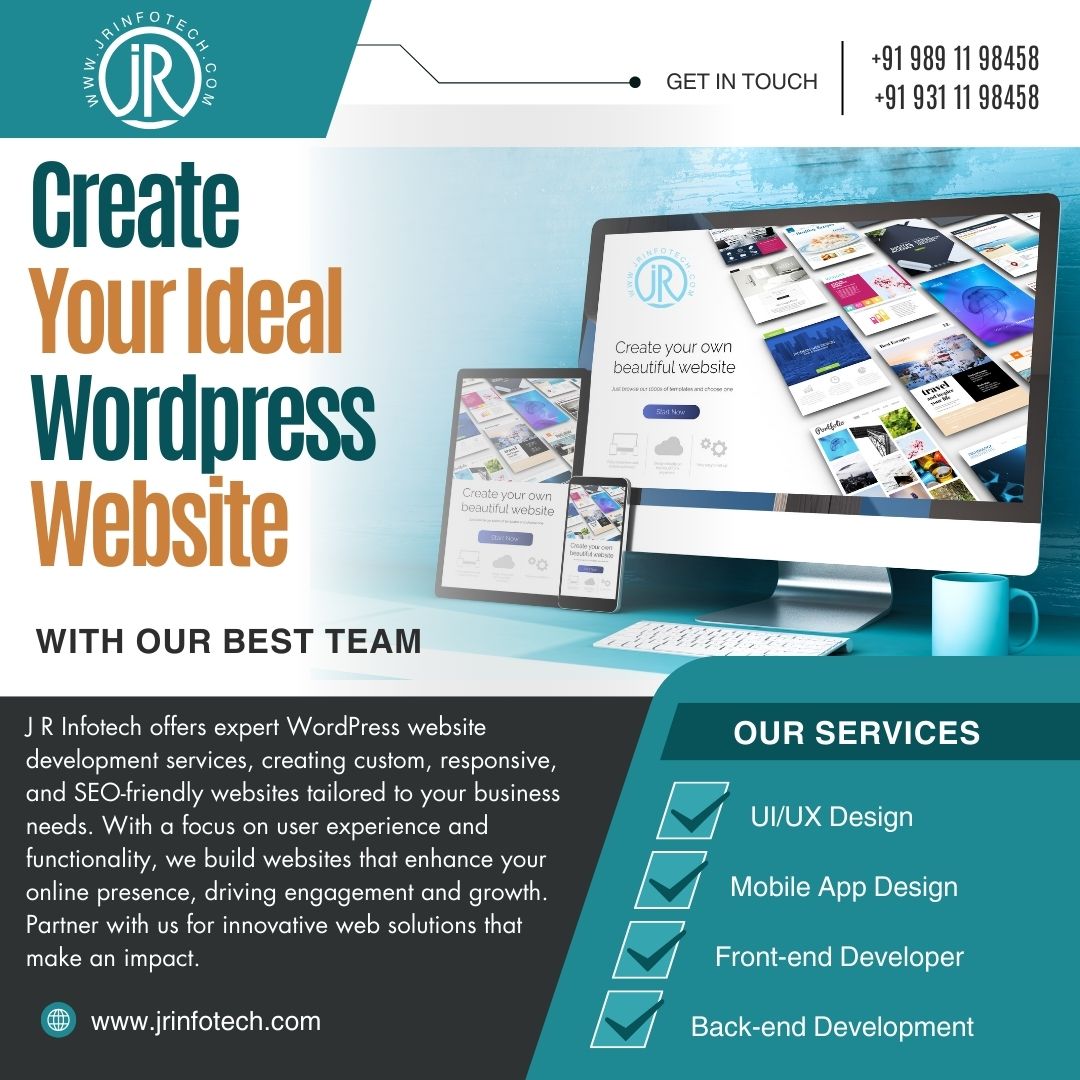Blog
The Ultimate Guide to WordPress Website Development

Introduction
In today’s digital age, having a strong online presence is no longer optional—it’s a necessity. Whether you’re a small business owner, a freelancer, or someone with a hobby, a website allows you to showcase your work, connect with your audience, and grow your brand. But with so many website-building platforms available, why should you choose WordPress? Simply put, WordPress is one of the most powerful, flexible, and user-friendly platforms out there. Let’s dive into the world of WordPress website development and explore how you can build a website that stands out.
Understanding WordPress
What is WordPress?
WordPress is a content management system (CMS) that allows you to create and manage websites with ease. Initially launched in 2003 as a blogging platform, WordPress has evolved into a versatile tool that powers over 40% of all websites on the internet. Whether you’re creating a blog, a portfolio, an e-commerce store, or a business site, WordPress has the tools and features you need.
The Difference Between WordPress.com and WordPress.org
Before diving in, it’s important to understand the distinction between WordPress.com and WordPress.org:
WordPress.com is a hosted platform where WordPress takes care of hosting, maintenance, and security. It’s a good option for beginners who want a simple setup without worrying about technical aspects.
WordPress.org is a self-hosted platform, giving you full control over your website. You can choose your hosting provider, install custom themes and plugins, and have complete control over your site’s functionality and design.
Getting Started with WordPress
Choosing the Right Domain Name
Your domain name is your website’s address on the internet, so it’s crucial to choose one that’s memorable, relevant, and easy to spell. Ideally, your domain name should reflect your brand or the content of your website.
Selecting a Reliable Hosting Provider
A reliable hosting provider ensures that your website is fast, secure, and always available to your visitors. Several well-known hosting providers for WordPress are Bluehost, SiteGround, and WP Engine. When selecting a host, it’s important to consider aspects such as uptime, customer support, and scalability.
Setting Up Your WordPress Site
Installing WordPress
After securing your domain and hosting, the following step is to install WordPress.. Most hosting providers offer one-click WordPress installations, making this process quick and easy.
Understanding the WordPress Dashboard
After installation, you’ll have access to the WordPress dashboard, the control center of your site. Here, you can manage your content, customize your site, install plugins, and more. Familiarizing yourself with the dashboard is key to effectively managing your WordPress site.
Choosing and Customizing a Theme
How to Choose the Right Theme
Your theme determines the overall design and layout of your site. WordPress offers thousands of free and premium themes to choose from. When selecting a theme, consider factors like responsiveness, customization options, and support.
Customizing Your Theme to Match Your Brand
After selecting a theme, the next step is to tailor it to align with your brand. Most themes allow you to adjust colors, fonts, and layouts without needing any coding skills. The WordPress Customizer is a powerful tool that lets you preview changes in real time.
Essential Plugins for WordPress
Must-Have Plugins for Functionality
Plugins are tools that add functionality to your WordPress site. There are plugins for almost anything—SEO, security, social media integration, and more. Some essential plugins to consider include:
Contact Form 7: Easily create and manage contact forms.
WooCommerce: Turn your site into an e-commerce store.
Jetpack: Enhance your site’s performance, security, and traffic.
Best Plugins for SEO Optimization
Search engine optimization (SEO) is crucial for getting your site noticed by search engines like Google. Plugins like Yoast SEO and All in One SEO Pack help you optimize your content, meta tags, and site structure to improve your search engine rankings.
Creating Engaging Content
Writing Your First Post or Page
Content is king, and WordPress makes it easy to create engaging content. Start by writing your first blog post or page. Use the Gutenberg editor to add text, images, and multimedia elements to your content. Remember to break up your text with headings, bullet points, and images to keep readers engaged.
Tips for Creating SEO-Friendly Content
To broaden your content’s reach, adhere to these essential SEO strategies:
Use Relevant Keywords: Identify keywords that your target audience is searching for and incorporate them naturally into your content.
Optimize Meta Descriptions: Write compelling meta descriptions that summarize your content and include your target keywords.
Use Internal and External Links: Link to other relevant content on your site and authoritative external sources.
Understanding WordPress Widgets and Menus
How to Use Widgets to Enhance Functionality
Widgets are small blocks that add specific functionality to your site, like a search bar, recent posts, or social media feeds. You can easily add widgets to your site’s sidebar or footer through the WordPress Customizer.
Setting Up and Organizing Menus
Menus are essential for guiding your visitors through your site. In WordPress, you can create custom menus and organize them to include links to your pages, posts, categories, and more.
Optimizing Your WordPress Site for SEO
On-Page SEO Best Practices
On-page SEO involves optimizing individual pages to rank higher in search engines. Here are some best practices:
Use Descriptive Titles: Include your target keywords in your page titles.
Optimize Images: Compress images to reduce load time and use alt tags to describe them.
Use Headings Effectively: Organize your content with H1, H2, and H3 headings to improve readability.
Using SEO Plugins Like Yoast
Yoast SEO is one of the most popular WordPress plugins for optimizing your site for search engines. It provides real-time feedback on your content’s readability and SEO performance, helping you make improvements on the fly.
